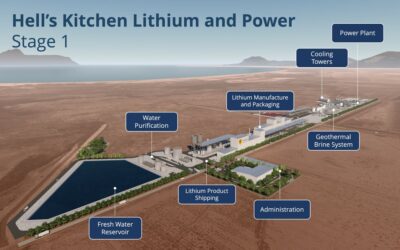The Greater Palm Springs housing market, a vivid tableau of dynamic change and growth, continues to evolve as we progress through 2024. This article delves into the insights provided by the April 2024 Desert Housing Report, highlighting trends in pricing, sales, inventory, and market dynamics. The Report is prepared by Market Watch LLC on behalf of Greater Palm Springs Realtors and the California Desert Association of Realtors.
Record-Breaking Prices
April saw the median price of a detached home in Greater Palm Springs reach an unprecedented $724,523, marking a 6.6% increase over the previous year. Attached homes weren’t far behind, with a median price of $500,000, up 4.2% year-over-year. These record figures are indicative of a robust demand in the region, fueled by both local and external factors, including a limited inventory and the Valley’s ever-increasing appeal as a residential and vacation destination.
Sales Trends: A Slow But Steady Recovery
The market is witnessing a slow recovery in sales volumes, which, although still 19.8% below historical norms, have shown improvement over the previous months. The total sales in April amounted to 716 units per month, slightly above the previous year’s figure of 704 units. The dollar volume of these sales also increased by 11% compared to last year, totaling $669 million, with significant contributions from homes priced over $1,000,000.
Inventory and Market Balance
As of May 1st, total inventory stood at 2,597 units – the highest in nearly four years but still approximately 1,000 units below the pre-pandemic norms. This increase in inventory is a positive sign, indicating a gradual move towards a more balanced market. The ‘months of sales’ ratio, a key metric that measures the number of months it would take to sell the current inventory at the current sales pace, stood at 4.2 months. This is an increase from last year and a signal of stabilizing market conditions, suggesting that the market is not overly saturated with inventory.
Geographic and Price Disparities
The Greater Palm Springs housing market displays a rich tapestry of geographic and price disparities that illustrate the unique dynamics at play within each community. Indian Wells, for instance, leads the pack with an 18.2% increase in the prices of detached homes, reflecting its status as a premium locality with high-end amenities and a coveted lifestyle. In contrast, Desert Hot Springs saw a decline of 4.2% in home prices, perhaps due to its more affordable housing stock and different demographic appeals.
Further adding to this complex picture, the city of Indio showcased a robust 7.6% increase in the prices of attached homes, indicating a growing demand in more moderately priced housing segments. Meanwhile, Indian Wells experienced a significant contraction, with prices of attached homes falling by 11.4%. This might be attributed to a shift in buyer preference or a temporary market adjustment within this specific housing category.
The variance extends to the selling times and market dynamics across cities. For instance, homes in Coachella, the city with the fastest selling time, took an average of only 27 days to sell, underscoring its high demand and possibly more competitive pricing strategies. Conversely, Bermuda Dunes recorded the highest average selling time at 54 days, which might reflect a slower market or possibly higher-priced listings requiring longer to attract the right buyer.
Sales volumes also differ notably between cities, highlighting their unique market conditions. Palm Desert recorded the highest number of unit sales, which can be attributed to its broad appeal encompassing a mix of residential options from luxury to more affordable segments. Palm Springs followed closely, benefiting from its reputation as a vibrant and culturally rich city that attracts both full-time residents and vacation home buyers.
This geographic and price disparity underlines the importance of localized market strategies and the need for buyers and sellers to understand the specific conditions and trends of each city within Greater Palm Springs. As the market continues to evolve, these local nuances will play a critical role in shaping the broader regional landscape.
Time on Market and Discounts
The median number of days homes stayed on the market was 44, slightly up from the previous year, indicating a relatively stable selling period across the Valley. Discounts on selling prices have been modest, with average discounts for detached and attached homes around 2.3% and 2.6%, respectively. Notably, Desert Hot Springs had the lowest selling discount at just 0.4%, reflecting a tight market in more affordable segments.
Future Outlook
As we look ahead, the Greater Palm Springs housing market presents a nuanced picture, where current trends and anticipated developments suggest both opportunities and challenges. The market is expected to lean towards favoring buyers in the coming months, driven by increasing inventory levels that are reaching their highest point in nearly four years. This shift could introduce more competitive pricing and potentially better negotiation leverage for buyers.
Economic factors such as interest rates and regional economic growth will significantly influence the market’s trajectory. If mortgage rates, which have been a critical factor in housing affordability, continue to stabilize or decrease, we may see an influx of buyers re-entering the market, thereby sustaining demand despite the higher inventory. This is particularly pertinent as recent declines in inflation spark hope that borrowing costs could become more favorable, which would invigorate the market further.
Moreover, Greater Palm Springs’s appeal as a premier destination for retirees and tourists continues to drive demand for primary and secondary residences. The region’s lifestyle, characterized by its vibrant arts scene, outdoor activities, and high-quality amenities, keeps it at the top of the list for many prospective homeowners.
However, potential headwinds such as economic uncertainty and global events could temper market growth. Buyers and sellers must stay informed and agile, adapting to any shifts in the economic landscape that could impact the housing market. Real estate professionals in the region should focus on providing targeted advice that considers both current market conditions and longer-term trends, helping clients navigate this evolving landscape effectively.
In sum, the future of the Greater Palm Springs housing market holds promise, underscored by a gradual return to pre-pandemic norms and a balance between supply and demand. Stakeholders should monitor key indicators such as inventory levels, days on market, and price adjustments closely to optimize their strategies in this dynamic environment.




